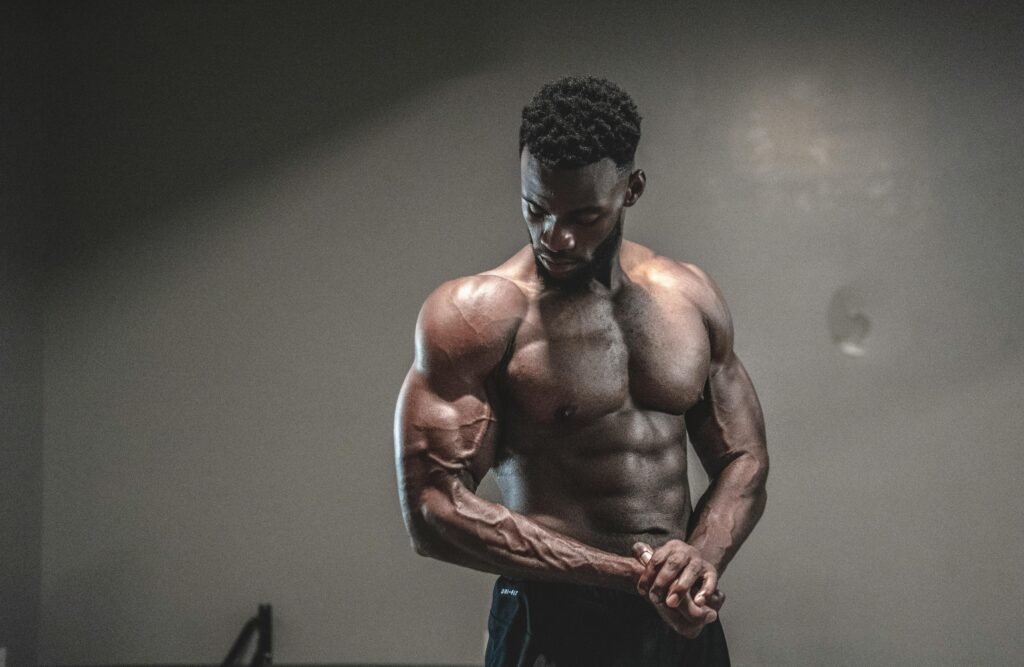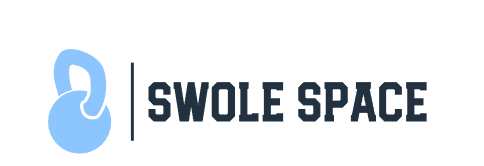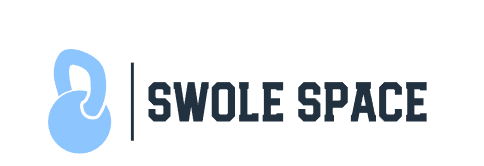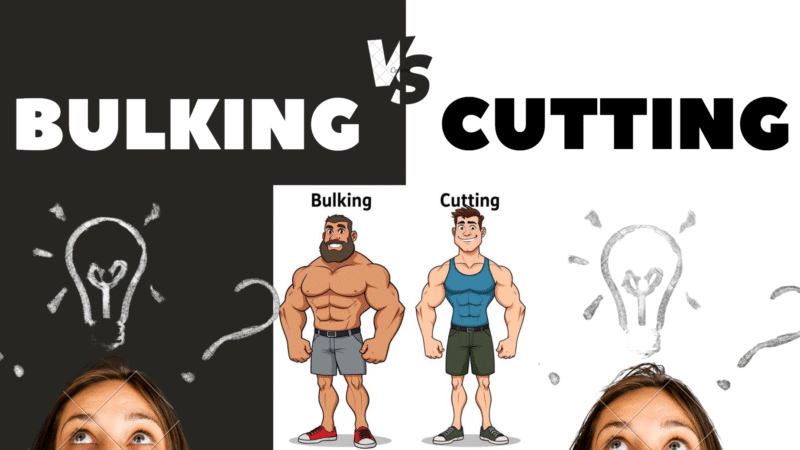When people start resistance training at home, they usually come across two popular fitness phases: bulking and cutting. Each phase has a different goal, a different style of eating, and unique training adjustments. If you’ve ever wondered when to bulk, when to cut, and how to make these phases work for you without a commercial gym, this guide breaks down bulk vs cutting in a practical way.
Table of Contents
What Does Bulk vs Cutting Actually Mean?

- Bulking is when you intentionally eat in a calorie surplus to build muscle. You fuel your body with more nutrients than it burns, giving your muscles the resources they need to grow.
- Cutting is the opposite — you eat in a calorie deficit to reduce body fat while working to maintain the muscle you already have.
Both phases serve a purpose, but they are not meant to be done at the same time. Choosing one depends on your current body composition, goals, and how comfortable you are with either gaining a bit of fat (during a bulk) or eating less food (during a cut).
The Benefits of Bulking
A bulk is about creating the best environment for muscle growth. When you consistently fuel your body with more calories and protein than it burns, you set yourself up for bigger strength gains and muscle development.
Why bulking works
- Extra energy for training: You’ll notice that workouts feel easier when you have more food in your system.
- Muscle gain: Surplus calories support protein synthesis, the process that builds muscle tissue.
- Strength improvements: With more fuel, you can push harder in your workouts, which translates into lifting heavier and building strength faster.
The trade-off? Most people gain some fat along with muscle. The key is to keep your calorie surplus moderate so you’re building muscle without adding too much unnecessary fat.
The Purpose of Cutting
Cutting is the phase where you focus on lowering body fat while holding onto your hard-earned muscle. It’s not just about eating less — it’s about eating strategically and training smart.
Why cutting works
- Leaner physique: Cutting allows your muscle definition to show by stripping away fat.
- Improved health markers: Lower body fat often benefits heart health, insulin sensitivity, and overall energy levels.
- Discipline builder: Sticking to a cutting plan requires consistency, which builds long-term habits.
The challenge with cutting is that your body resists long-term calorie deficits. You’ll feel hungrier, possibly more fatigued, and your performance might dip slightly in the gym.
When Should You Bulk and When Should You Cut?
Fitness isn’t one-size-fits-all. The decision depends on where you’re starting and what your short-term goals are.
- If you’re new to training: You might experience “newbie gains,” where your body can build muscle and lose fat at the same time. But eventually, you’ll need to pick a phase.
- If you’re already lean but want more muscle: A bulk is usually the better choice.
- If you’ve built muscle but feel ‘soft’ around the edges: A cut can help reveal your muscle definition.
A good rule of thumb:
- Men might consider cutting when body fat is above 18–20%.
- Women might consider cutting when body fat is above 28–30%.
Below those ranges, bulking is often more effective.
Nutrition: The Foundation of Both Phases
No matter which phase you choose, nutrition is the driver.
Bulking nutrition
- Aim for a 10–20% calorie surplus.
- Prioritize protein-rich foods like chicken, fish, eggs, beans, and protein powder.
- Add calorie-dense foods like oats, rice, peanut butter, and olive oil to make hitting your calorie goals easier.
Cutting nutrition
- Create a 10–20% calorie deficit (eating slightly less than you burn).
- Keep protein high to protect muscle while losing fat.
- Focus on high-volume, nutrient-dense foods like vegetables, fruits, and lean protein to stay fuller longer.
Training Adjustments for Bulking and Cutting

Your workouts at home won’t completely change between these phases, but there are slight adjustments you can make.
Training while bulking
- Train hard and heavy: Push for progressive overload (adding more weight, reps, or sets over time).
- Stick to the compound basics: Squats, push-ups, pull-ups, and rows with free weights or resistance bands.
- Volume can be higher since you’ll have more energy.
Training while cutting
- Focus on maintaining strength: Keep lifting heavy to signal your body to preserve muscle.
- Add in some cardio if fat loss slows: This can be as simple as jump rope, brisk walking, or cycling indoors.
- Keep volume moderate to avoid burning out on fewer calories.
For those training at home, check out our Gear & Equipment page for recommended tools to make your workouts more effective.
Our Top picks
Disclosure: We may earn a commission from links mentioned in this post, at no extra cost to you. We only recommend products we trust
The Overlooked Phase: Maintenance
Not enough people talk about the importance of maintenance. After bulking or cutting, a maintenance phase lets your body recover from diet fatigue, stabilize hormones, and mentally reset.
- Duration: 2–12 weeks.
- Goal: Hold your current weight while giving yourself a break from deficits or surpluses.
- Why it matters: It prepares your body for the next bulk or cut so you don’t burn out.
Think of it as the “reset button” that keeps long-term progress sustainable.
Common Mistakes in Bulk and Cut Cycles
- Bulking too fast: Gaining weight too quickly usually means adding fat, not muscle.
- Cutting too aggressively: Extreme deficits make you lose muscle along with fat.
- Skipping maintenance: Jumping from one phase to the next without a break increases burnout.
- Poor tracking: Not monitoring calories, workouts, or progress photos makes it easy to stall.
Optional Helpful Tracking Tools for Bulk and Cut Success
Supplements That Can Support Both Phases
Supplements aren’t required, but they can make your journey smoother.
- Protein powder: Makes hitting your daily protein target easier.
- Creatine: Helps with strength and muscle retention in both bulking and cutting.
- Caffeine or pre-workout: Boosts energy during calorie deficits.
- Fish oil or multivitamins: Supports overall health.
Final Thoughts
The choice between bulking and cutting isn’t about which is better — it’s about which is right for you right now. If your goal is size and strength, a bulk will push you forward. If your goal is definition and fat loss, a cut is the smarter move.
For long-term progress, cycle between bulks, cuts, and maintenance phases. That balance ensures you keep gaining muscle, stay lean, and avoid burnout.
Whether you’re training in a fully equipped gym or using nothing more than resistance bands and a set of dumbbells at home, the principles remain the same: fuel your body for the phase you’re in, train with purpose, and give yourself time to recover.














